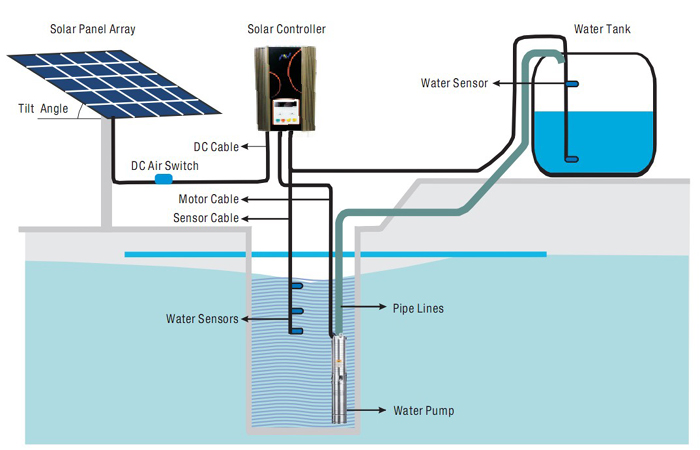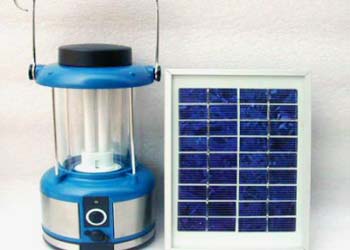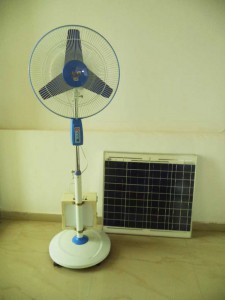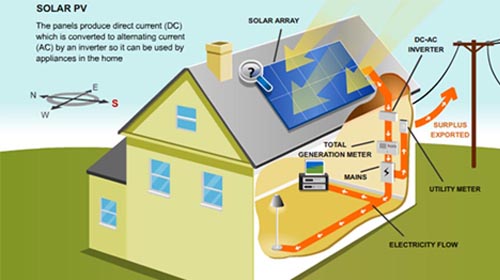Turn Your Rooftop Into a Power Plant
Several cities and towns in the country are experiencing a substantial growth in their peak electricity demand. Municipal Corporations and the electricity utilities are finding it difficult to cope with this rapid rise in demand and as a result most of the cities/towns are facing severe electricity shortages. Various industries and commercial establishments e.g. Malls, Hotels, Hospitals, Nursing homes etc housing complexes developed by the builders and developers in cities and towns use diesel generators for back-up power even during the day time. These generators capacities vary from a few kilowatts to a couple of MWs. Generally, in a single establishment more than one generators are installed; one to cater the minimum load required for lighting and computer/ other emergency operations during load shedding and the others for running ACs and other operations such as lifts/ other power applications. With an objective to reduce dependency on diesel gen-sets, a scheme to replace them with SPV is being proposed. Further, in order to utilize the existing roof space of buildings, the scheme proposes to promote roof-top SPV systems on buildings to replace DG gensets installed for minimum load requirement for operation during load shedding. These loads are generally varying between 25 kW to 100 kW or so.
A roof top SPV system could be with or without grid interaction. In grid interaction system, the DC power generated from SPV panels is converted to AC power using power conditioning unit and is fed to the grid either of 11 KV three phase line or of 220 V single phase line depending on the system installed at institution/commercial establishment or residential complex. They generate power during the daytime which is utilized fully by powering the captive loads and feeding excess power to the grid as long as grid is available. In cases, where solar power is not sufficient due to cloud cover etc. the captive loads are served by drawing power from the grid. The grid- interactive rooftop SPV systems thus work on net metering basis wherein the beneficiary pays to the utility on net meter reading basis only. Ideally, grid interactive systems do not require battery back up as the grid acts as the back-up for feeding excess solar power and vice-versa. However, to enhance the performance reliability of the overall systems, a minimum battery-back of one hr of load capacity is strongly recommended. In grid interactive systems, it has, however to be ensured that in case the grid fails, the solar power has to be fully utilized or stopped immediately feeding to the grid (if any in excess) so as to safe-guard any grid person/technician from getting shock (electrocuted) while working on the grid for maintenance etc. This feature is termed as ‘Islanding Protection’
Non-grid interactive systems ideally require a full load capacity battery power back up system. However, with the introduction of advanced load management and power conditioning systems, and safety mechanisms, it is possible to segregate the day-time loads to be served directly by solar power without necessarily going through the battery back-up. As in the previous case of grid-interactive systems, minimum one hour of battery back-up is, however, strongly recommended for these systems also to enhance the performance reliability of the systems. The non-grid interactive system with minimum battery back are viable at places where normal power is not available during daytime. In case the SPV power is to be used after sunshine hours, it would require full load capacity battery back up.
A rooftop photovoltaic power station, or rooftop PV system, is a photovoltaic system that has its electricity generating solar panels mounted on the rooftop of a residential or commercial building. The various components of such a system include, photovoltaic modules, mounting systems, cables, solar inverters and other electrical accessories
Rooftop mounted systems are small compared to ground-mounted photovoltaic power stations with capacities in the megawatt range. Rooftop PV systems on residential buildings typically feature a capacity of about 5 to 20kilowatts (kW), while those mounted on commercial buildings often reach 100 kilowatts or more.
We offer following solar rooftop design
| Sr. No. |
Systems Capacity |
Land Required (Sq Mtr) |
Project Type |
| 1 |
10kW |
100-150 |
Rooftop / Ground Mounted |
| 2 |
50 kW |
500-600 |
Rooftop / Ground Mounted |
| 3 |
100kW |
1000-1200 |
Rooftop / Ground Mounted |
| 4 |
Customized design as per requirement |
|
|
Applications: for diesel abatement in Institutions, Govt. Buildings, Commercial establishments e.g. Malls, Hotels, Hospitals, Nursing homes, Industry & Housing complexes facing huge power shortage during daytime
Benefits
- Will pay back the cost in 5 to 6 years
- Life : 25 to 30 years
- No air and noise pollution
- No moving parts and zero maintenance except cleaning of SPV panel once in a while
- Beneficiary to decide supplier on cost and quality competitive basis. List of suppliers available at Ministry’s website
- battery back up system are also useful where normal power is not available during daytime and after sunshine hours.
- A 100 kW capacity Roof Top system could save around 50,000 liters of diesel per year





